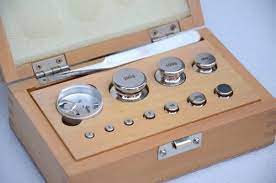
Calibration Standards
• Devices are compared against less accurate ones to verify performance. • Essential for traceability, reciprocal agreements, and fair international trade. • Found in primary calibration laboratories, often National Metrology Institutes (NMIs). • Standards are determined by measurement devices' specifications, accuracy needs, budget, usability, form factor, and device calibration capabilities. • Calibration manufactures various calibration standards including electrical, voltage, AC/DC transfer, resistance, and temperature standards. • Quality standards like ISO 9001 and ISO/IEC 17025 are used for calibration. • Company offers selection guides for pressure standards, primary temperature calibration standards laboratory, and high performance gas flow transfer standards.




